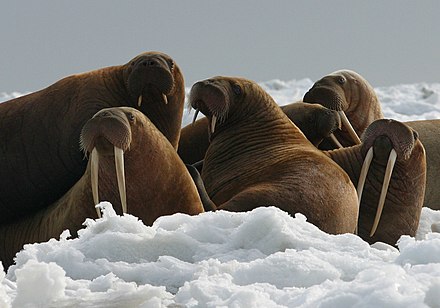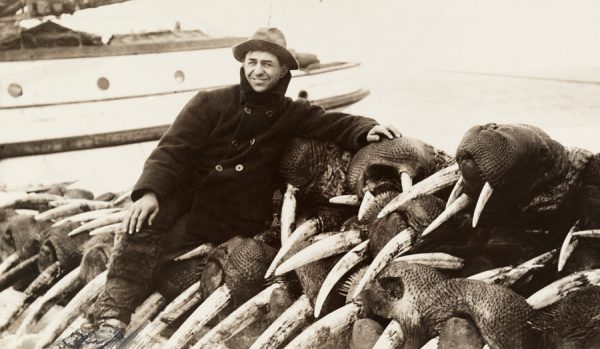Over Hunting, is That Why The Vikings Abandon Greenland
Although the Vikings originally came from Sweden, Norway, and Denmark, they eventually made their way to Greenland in the 10th century, establishing a settlement there.
Approximately 400 years later, that settlement was deserted. It wasn’t until the early 1800s that Europeans returned to Greenland, finding the remnants of the abandoned settlement, but there were no obvious clues about why the Vikings left. The reasons remained a mystery until relatively recently.
Over the years, archaeologists have considered a number of possible answers to this conundrum.

For a long time, it was believed to be due to changes in the climate, that the area had become too cold for the farming and breeding of livestock that were the settler’s stock in trade.
In 2015, Iceland Magazine ran a story suggesting it was more complicated than that, saying that the most likely reasons were a combination of soil erosion from overgrazing, issues with the local Inuit population, and the ravages of the Black Death.
It’s even been posited that some of the reasons could include the increased interest in elephant ivory causing a correlating decrease in the market for walrus ivory, or that the younger generation just go tired of living somewhere so remote and wanted to go home.
Most recently, however, the belief is that it largely had to do with the walruses.
Last month, Gizmodo reported on newly-published research which strongly supports the idea that the collapse of the Viking settlements on Greenland was directly related to their economic reliance on walrus ivory and subsequent over-hunting of the animals.
The work doesn’t cite the walruses as the only factor, but does suggest a strong relationship between the two events.
During the Medieval period, the Greenlanders didn’t really have very many things they could offer the rest of Europe. As a result, walrus tusks became a major source of trade for them, allowing them to obtain much-needed iron and timber.
Europeans prized the ivory as a luxury good, using it for making items like chess pieces and jewelry.

By the 11th century, nearly all the ivory in Europe was coming from Greenland, but it proved to be an unsustainable arrangement.
Over time, the Greenland Vikings were forced to start hunting smaller walruses, or those farther afield, to keep up with the demand.
Bastiaan Star, one of the authors of the study, said that evidence suggested that they ended up hunting not only smaller animals and from a wider area , but also more of the walruses being taken were females, which would, of course, slow down the rate at which the species was reproducing.
At the same time, elephant ivory was making itself known in Europe. By the 13th century, the larger elephant tusks had become more popular than walrus ivory.

It has historically been thought that the prevalence of elephant ivory in Europe caused the decline of Greenland’s trade in walrus tusks, but the study suggests that the reverse was true, that walrus hunting actually increased.
Since walrus ivory was becoming less valuable, more of it was needed to obtain the resources the Greenlanders needed.
The team doing the research gained their information by studying rostra, the part of the walrus that includes its head and snout, of medieval walruses.
They had obtained the rostra of 67 walruses from various parts of Europe, dating from the 11th to the 15th centuries. The rostra were analyzed using DNA sequencing, morphological analysis, and isotope analysis, which allowed the team to figure out where they came from, how large they were, and what sex they were.
They compared that data to some that they gained by analyzing various ivory artifacts from the same period as a way of getting some historical context.
The analysis showed that the animals were getting smaller over time, and were being sourced from sites farther to the north, including from the Baffin Bay area.
In short, the Greenland Vikings had to start following the walrus populations in order to keep hunting them. Eventually, however, that wasn’t enough, as walruses continued to increase in scarcity and the market for walrus ivory continued to decline, essentially vanishing after 1400.
The conclusion is that lacking this fundamentally necessary trade good, the Vikings of Greenland had to leave the area when their economy collapsed.
The theory of economic disaster is not only compelling, but it also flies in the face of the long-held earlier theories that leaving Greenland was primarily due to climate-related issues.
The climate theory was already under some fire, since there’s evidence to suggest that weather patterns in Greenland hadn’t really changed, despite there being a more significant cool-down in other parts of the world during that time.
Easter Island’s Famous Statues Have Bodies Underneath
One thing is abundantly clear: while it’s easy to say that the simplest answer to a question is usually also the correct answer, the world is seldom tidy and most large changes come from a variety of causes.





